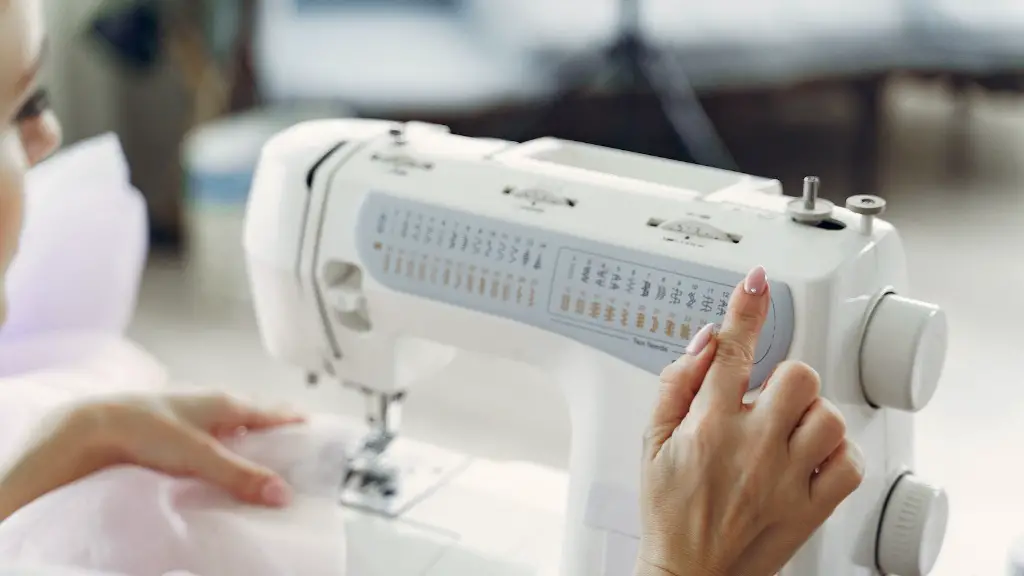Introduction
When it comes to sewing, many people are confused as to what kind of machine they need to buy. If you are one of them, then you may find yourself wondering if your sewing machine has a serger. In the following article, we will discuss the answer to this question and explore why a serger is beneficial for your sewing projects. We’ll also look at the features to look for when purchasing a serger, and provide additional resources to get you started. Lastly, we’ll explore the different types of sergers on the market and how they can help you improve your projects.
Benefits of having a Serger
A serger is a special type of sewing machine used to create professional-looking seams and hems. It utilizes three or four spools of thread, which are fed through needles to create tight, secure stitches that are stronger and more durable than those created by a regular sewing machine. A serger is also capable of overcasting the edges of fabric to prevent fraying and create a cleaner finish.
Having a serger on hand gives you the opportunity to take on more sewing projects, as it can handle heavier fabrics and complex finishes. This can be especially beneficial if you are planning to make items for resale, such as clothing or home décor. Additionally, a serger can save you time by helping to finish seams more quickly than a regular sewing machine.
Features to Consider When Purchasing a Serger
When shopping for a serger, it’s important to consider the type of projects you plan to take on as well as the features the serger offers. Most common sergers can handle medium to heavy-weight fabrics, so it’s important to select one that has the features you need for the types of projects you plan to work on.
Look for features such as adjustable stitch length, width, and tension, as well as built-in differential feed to aid in the creation of smooth rolled hems, or a different type of feed feature depending on the type of serger you purchase. Additionally, some sergers offer a variety of decorative stitches, which can be helpful for creating unique embellishments and finishes.
Types of Sergers on the Market
There are several types of sergers available on the market, and it’s important to understand the differences and which one might be best for your needs. Overlock machines and coverstitch machines are two of the most popular types of sergers, while a flatlock machine is a more specialized type of serger that’s great for creating unique, intricate stitches.
An overlock machine can be used for both decorative and utilitarian purposes. It is capable of creating overcast or rolled hems as well as a variety of decorative stitches, and it can be used with both light and heavy fabrics.
A coverstitch machine, on the other hand, is designed for decorative stitching, and it can be used to create professional-looking hems and finishes on t-shirts, dresses, and other clothing items.
Finally, a flatlock machine is great for creating intricate, decorative stitches. It’s usually used for quilting and applique and can be used to create detailed and unique stitches on a variety of fabrics.
Which Machines Require a Serger?
There are certain sewing projects that are almost impossible to complete without a serger, such as hemming a pair of pants or creating precise overcast finishes. In addition, many quilting and applique projects require a serger in order to create the intricate detailing that is needed. Sergers are also used to create tucks and pleats, and to make garments fitted more quickly and easily.
Additional Resources
Whether you’re a seasoned seamstress or a beginner, there are a number of helpful resources available to help you in your serger research process. Many books and websites offer tips and techniques for getting started with your serger as well as projects you can take on to get the hang of it.
Additionally, many local hobby stores and fabric stores offer classes that can introduce you to the basics of working with a serger.
Using a Serger to Improve Sewing Projects
Using a serger can be a great way to improve your sewing projects by adding professional-looking details that are not achievable with a regular sewing machine. Sergers are not only useful for creating complex decorations and finishes, but they can also save time by allowing you to complete tasks more quickly. Additionally, they are great for tackling heavier fabrics and creating sturdy, durable seams.
Conclusion
In conclusion, if you are looking to take your sewing projects to the next level, a serger can be a great investment. They offer a range of features and can be used for both decorative and utilitarian purposes. It’s important to do your research and consider the features of each machine before purchasing one in order to get the most out of it. With a little effort and research, you’ll be on your way to creating even more beautiful, professional-looking items.


